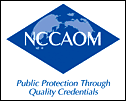Whether you accept it, avoid it or live somewhere in between, insurance coverage has become a defining issue for our profession. Patients increasingly expect to use their benefits, practitioners want to be compensated fairly for their time and expertise, and the system itself remains – at best – fragmented. The encouraging news is that coverage has expanded in meaningful ways. The challenging news is that reimbursement, across the board, remains inadequate.
The Evolution of the NCCAOM
The National Certification Commission for Acupuncture and Oriental Medicine (NCCAOM) is currently in its 23rd year of existence, and has certified more than 17,000 practitioners in acupuncture, Oriental medicine, Chinese herbology, and Asian bodywork therapy. Today, the NCCAOM is a thriving certification organization that has been rewarded for its excellence and still provides the only recognized certification programs for these four areas in more than 40 states.
The NCCAOM was first established in 1982 as the National Commission for the Certification of Acupuncturists (NCCA). The name was formally changed to NCCAOM in 1987.

After three years of research and a great deal of work from many volunteers, who were among the leading acupuncturists of the time, the first examination, the Comprehensive Written Examination in Acupuncture, was given in 1985. The first examination had 112, with 90 being certified.
In 1989, the Practical Examination of Point Location Skills (PEPLE) was added to the requirement for certification in acupuncture. The Clean Needle Technique (CNE) examination was added in 1991, and later combined with the comprehensive written examination.
Chinese herbology was first reviewed by the NCCAOM in 1989, with the first examination given in 1995. Asian bodywork therapy was added in 1996, with the first examination offered in 2000. In 2003, the certification in Oriental medicine was first offered. This certification represents all five branches of Oriental medicine.
As the practice of Oriental medicine continues to change and grow, so will the NCCAOM. We are pleased to be able to communicate with you through Acupuncture Today, and are planning to continue doing so in the future. If there is something you have been wanting to know about the NCCAOM, please do not hesitate to contact us at info@nccaom.org. Maybe your question will be the focus of our next article!



